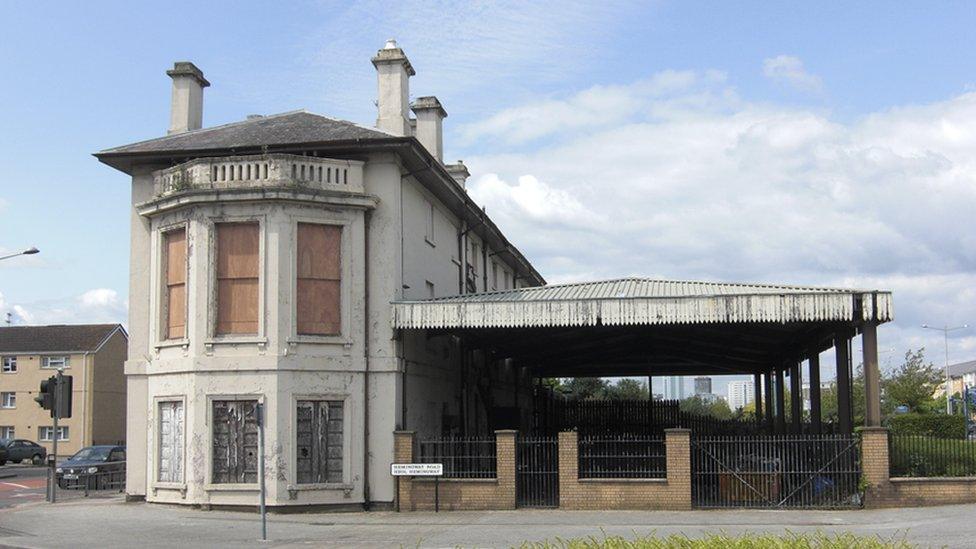Cardiff's neglected coal boom era area 'in danger'
- Published

Across from modern developments such as the Millennium Centre are remnants of the coal boom era including the boarded-up Merchant Place
The area behind Cardiff's historical rise as a great coal port is in danger of being lost unless it can be re-energised, an architecture expert has warned.
Mount Stuart Square was once home to the rich - but many buildings around it are now partially used or boarded up.
The Coal Exchange's owner hopes work there will be a catalyst for the area.
But Dr Juliet Davis thinks time is running out for other listed buildings unless investment is found.
It is an area central to Cardiff's rise to become a great port, earning the moniker "Chicago of Wales" - yet, it has been largely ignored despite redevelopments of the bay and city centre.
"I cycled around and was shocked, thinking 'how can it be in this condition? Why wasn't it included in Cardiff Bay's redevelopment plans?'," Dr Davis said.
"You have the Millennium Centre, which is high quality - but you look across to an old, empty building with its windows blocked.
"Life has been lost from Mount Stuart Square."
Pointing to how The Tate "set the tone" for Liverpool's waterfront redevelopment, she believes a major gallery or museum would help attract people back.
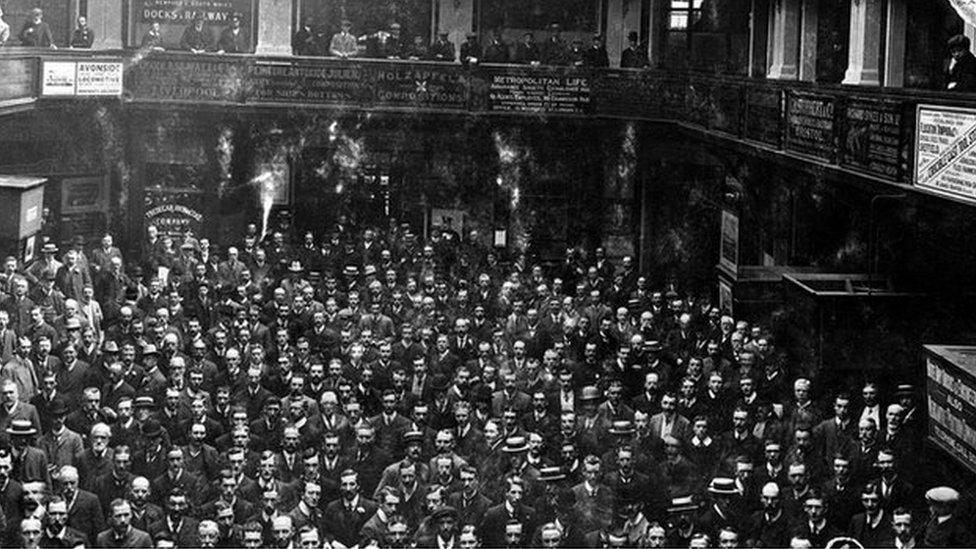
The Coal Exchange trading floor where the world price of coal was once set and the first million pound cheque was signed
The area was the vision of the second Marquess of Bute John Crichton-Stuart, who wanted to create a grand Georgian space to rival London's Berkeley Square.
But as the docks rose in prominence, the wealthy moved out and it became a commercial centre.
"In the 1880s, the Coal Exchange was built. It shows the demand for space that they built it in the middle of the square," she said.
"It seems bizarre in one way but makes sense as all the coal companies were around it and could come together in it."
Annual coal exports rose from one million tonnes in 1850 to 13 million by 1913, but the outbreak of World War One and other factors created market uncertainty.
By 1921, only six of the 52 companies operating in 1888 were still in business, with the industry never recovering.
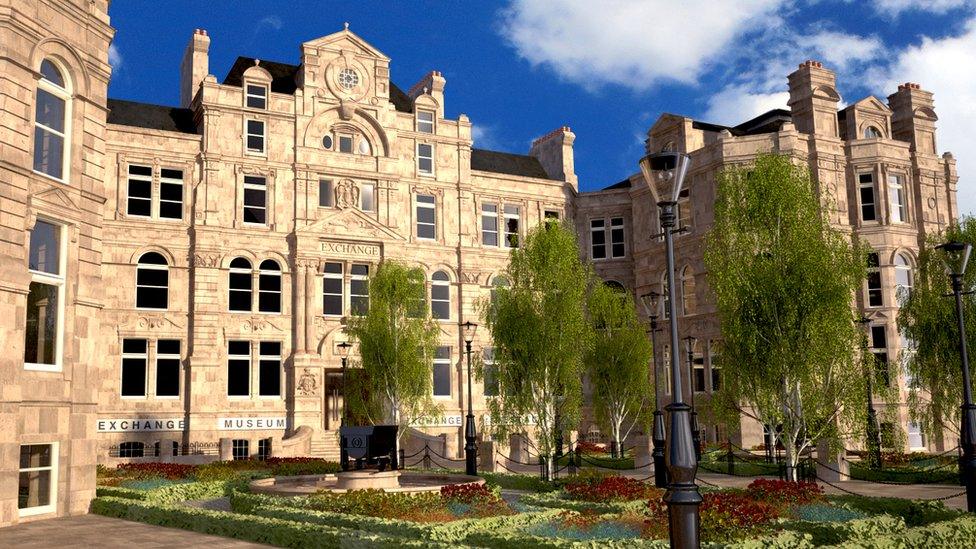
The Coal Exchange is undergoing a £40m transformation into a hotel - since closing it has been a music venue and was talked of as a home for the Welsh Assembly
While the Coal Exchange closed in 1958, the area's boom-era significance is illustrated by the buildings created.
Dr Davis added: "Cardiff was regarded as the Chicago of Wales with architects flocking to take up commissions.
"And they lived with some of the best Victorian buildings. It's one area you get the feel of the big city - all built to the edge of the site, five or six storeys.
"For a moment you feel like you're in a big, commercial city like Manchester."
In 1987, the Cardiff Bay Development Corporation was created to put the city on the world map again, with £1.8bn invested and 200 acres of derelict land reclaimed by the time it was dissolved in 2000.
But why did plans exclude these historical buildings around which the bay had grown?
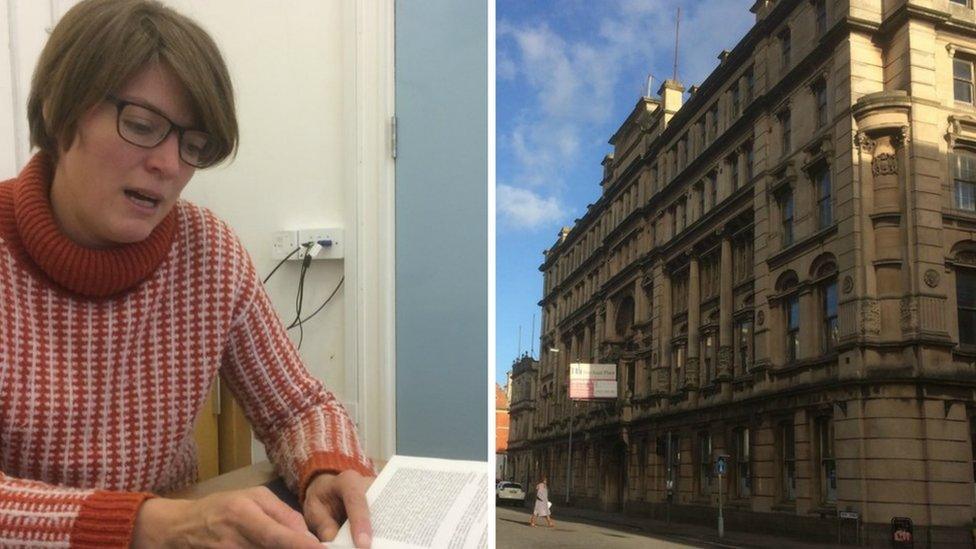
Cardiff University's Dr Davis has been studying the buildings and possible uses for those like Merchant Place/Cory's Building - created by one of the biggest shipping companies
Dr Davis believes creating the barrage and regenerating industrialised areas took the bulk of money.
"The older buildings [on Mount Stuart Square] were in use, a bit sad, but the hope was they would be catalysed by other work," she explained.
"The emphasis was creating big, iconic object buildings [such as the Millennium Centre], for attention, publicity and to attract other investment.
"But for whatever reasons, maybe the credit crunch, it didn't happen."
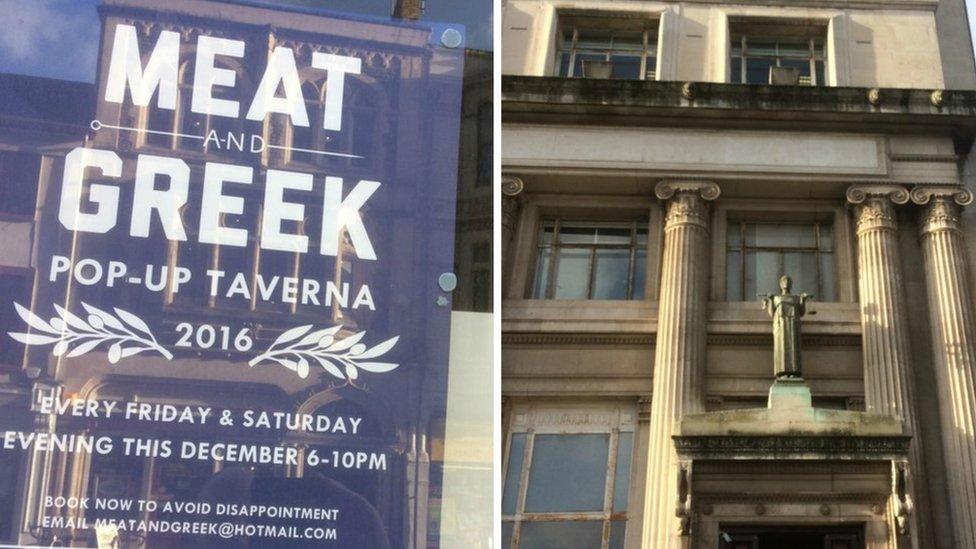
A pop-up Greek restaurant appeared in the Cory's Building in December while Portland House has a variety of uses - including a techno night in the bank vault
With the bad state of the Cory's building - former Bute Street home of one of the biggest coal companies, the Cory Brothers - putting developers off, Dr Davis believes it needs a patient financing model with investors taking a long-term view.
She points to the east and west villages in New York, adding: "Create a place people love to go, a cultural vibrancy with an intensity of uses.
"Artists in the garrets, businesses on the ground floor, a gallery, cafe, maybe a farmers' market around it on the weekend."
But she warned: "The time is nigh to address this. Every year that goes by [their condition grows worse]. With the Coal Exchange, they acted because they had to.
"Affordable housing is creeping in [being built around the area]. They are in real danger."
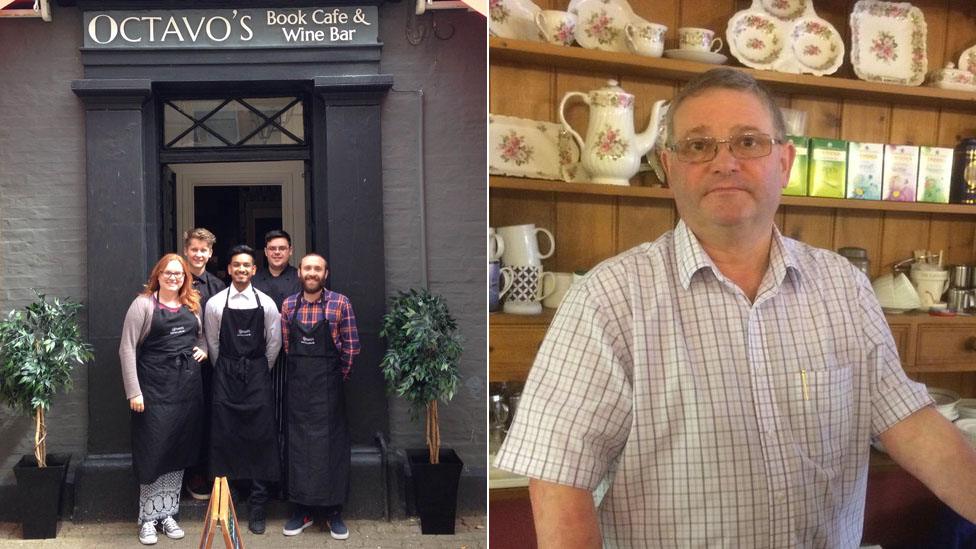
Business owners such as Nigel Mellings (right) vary in their degree of optimism
Nigel Mellings opened Trumps cafe on Bute Street in 1993 - six years before the waterfront development started.
He thought Mermaid Quay would be a mixture of shops and restaurants but said about 95% of the premises are eateries, taking most trade.
"Cardiff Bay was developed as a tourist attraction, preaching about the docks and how we used ships," he said.
"They should have done it like Bristol, developed the area around a museum."
He said the disused Cory's Building opposite could be turned into a university campus so it is used.
"In 20 years, nothing has happened. It's frustrating, there is no tourism here. We're surviving, that's about it," he added.
"People get off the train and are drawn to the other side towards the Millennium Centre and Senedd, not here."
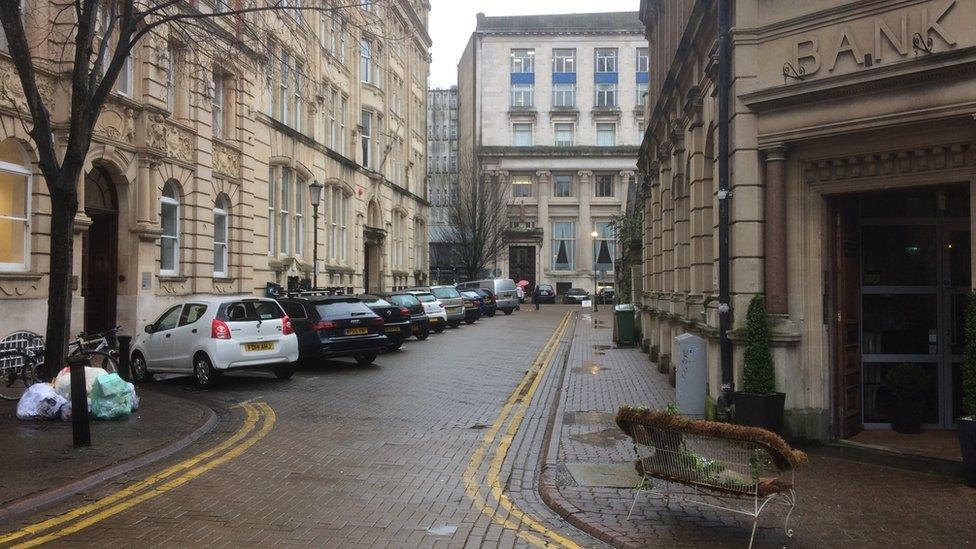
Mount Stuart Square has been used to film a variety of television programmes - including BBC's Sherlock
Hazel Cushion opened Octavo's book shop cafe and wine bar on West Bute Street in June 2016.
She believes because of the area's "wealth of history and architecture to rival any European capital city", it will be completely regenerated in the coming years.
"Development can only move in that direction - back from the sea," Ms Cushion added.
A big draw, she believes, will be the "quirky individuality" of businesses popping up as opposed to corporate chains on Mermaid Quay.
This is a view shared by the owner of Sunflower & I - a flower studio and cafe in an old bank.
It moved from the city centre because of chains moving in and a spokesman said a redeveloped Coal Exchange could attract independent businesses and create "something beautiful and unique".
'Catalyst'
After running the hall of the Coal Exchange for 12 years, putting on events, Mike Johnson was desperate to see the building saved.
But after showing about 15 developers around he had "almost given up hope".
However, he believes Signature Living's hotel plans - that include creating a heritage centre and housing the Butetown History and Arts Centre - can attract up to 1,000 people a week.
"For the uninitiated, Cardiff Bay starts at Mermaid Quay, phase two never really started," said Mr Johnson.
"But if you open up the Coal Exchange, you spark off all the other buildings and energise businesses all the way back to the station."
Signature Living's Lawrence Kenwright also believes its redevelopment will be a "catalyst" for the wider area.
Booking enquiries have already come in from New York - with hopes a building that sent coal to the world will pull in tourists from around the globe when it re-opens later this year.
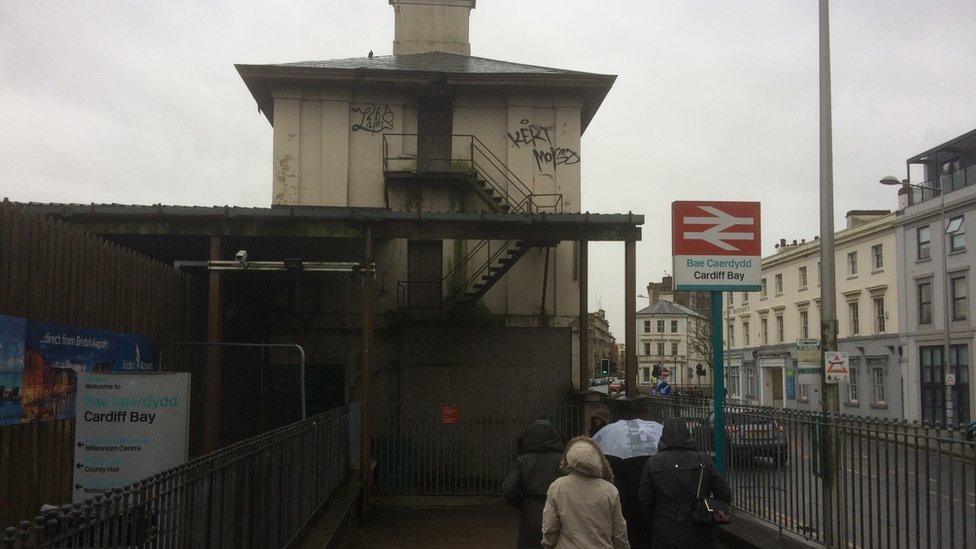
Dr Davis said the fact many people arrive at the bay past the disused station "does not fill you with much hope". It was on the Victorian Society's list of most endangered buildings but there are now plans to turn it into a military museum
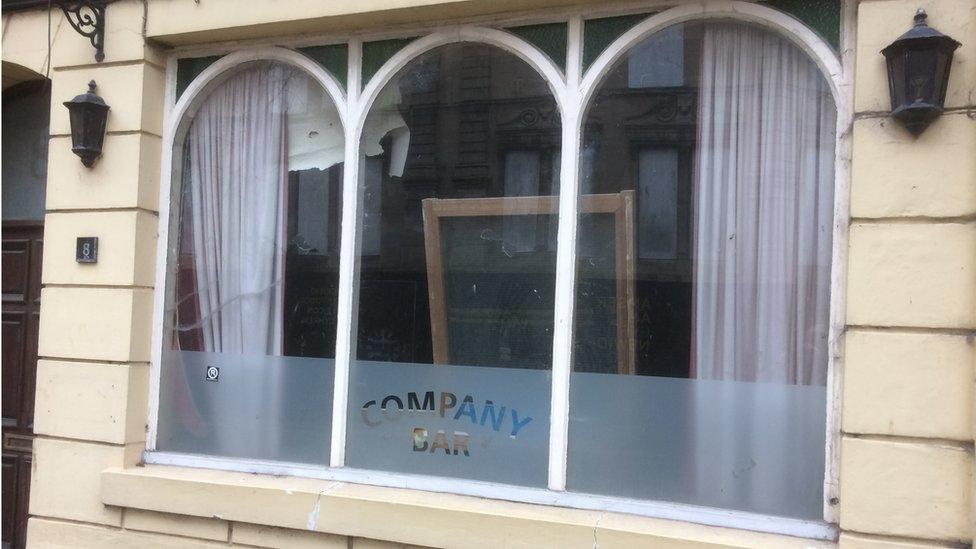
A disused bar of a former coal industry company
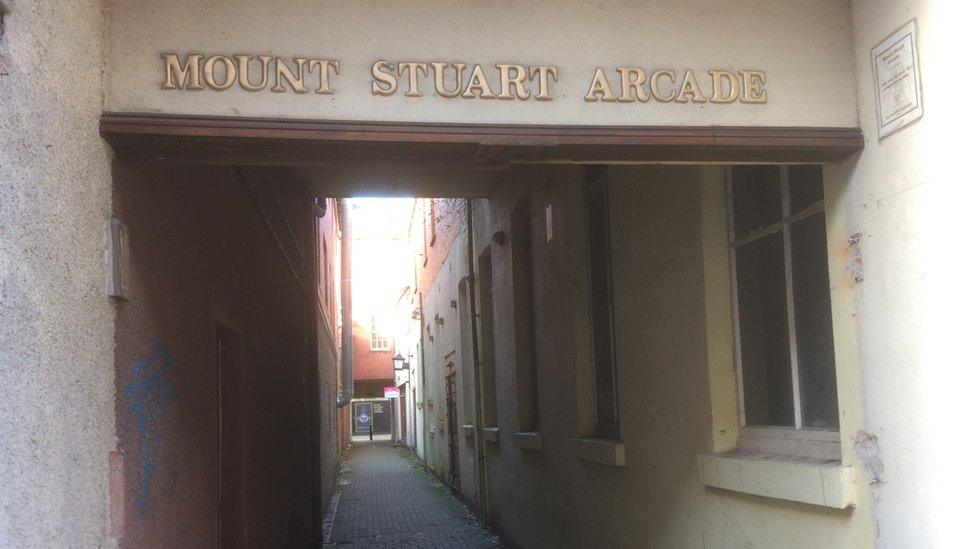
- Published13 July 2016
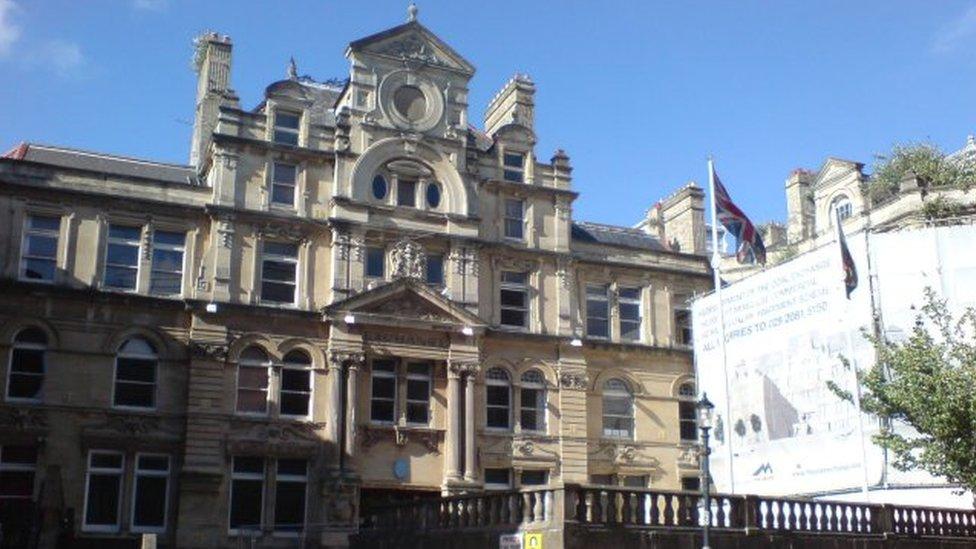
- Published3 September 2014
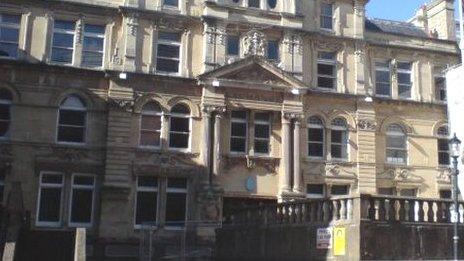
- Published14 September 2016
